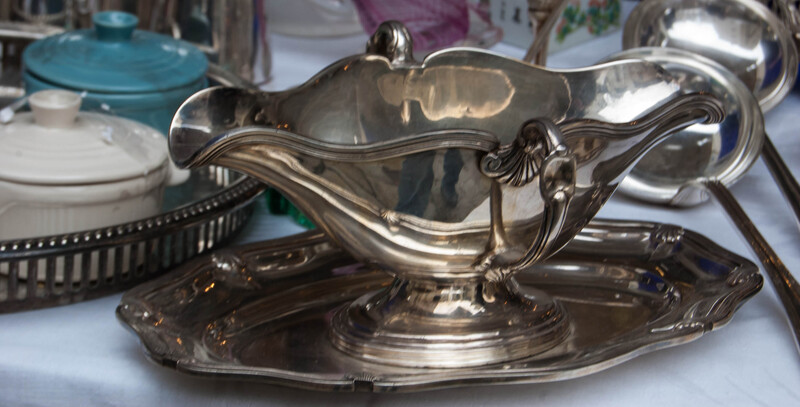Order from Disorder: Transformative Clutter Removal
Have you ever opened a closet, only to be overwhelmed by the sight of clothes, boxes, and items you've barely used in years? Does your workspace make you feel anxious or unproductive because of the sheer amount of clutter? If so, you're not alone. In our fast-paced, consumer-driven world, clutter can seem like an inescapable part of modern life. However, embracing transformative clutter removal can bring a sense of order, peace, and productivity into any environment - from homes to offices.
Understanding Clutter: More Than Just a Mess
Clutter may look different for everyone, but its effects are universal. It's not just about the physical mess - clutter can impact our mental, emotional, and even physical well-being. Transformative clutter removal isn't merely about discarding items. It's about creating a system that allows you to maintain an organized, harmonious space. It's about transforming chaos into order.
- Mental Clarity: An organized space supports clear thought and focus.
- Emotional Stability: Eliminating excess possessions can reduce anxiety and stress.
- Physical Health: A decluttered environment can improve air quality and safety.
- Increased Productivity: An organized environment supports greater efficiency.

The Psychology Behind Clutter and Disorder
Before diving into practical tips for transformative clutter removal, it's helpful to understand why we become attached to our belongings and why disorder takes hold. Our possessions can become a source of identity, comfort, or even nostalgia. Letting go is often tied to psychological hurdles such as fear of waste, emotional attachment, or anxiety about the future.
- Sentimental Value - We keep items due to memories associated with them.
- Fear of Scarcity - The belief that we might need something "someday."
- Status Symbolism - Holding onto items to maintain a certain image.
Recognizing these emotional barriers is the first step towards transformative decluttering.
Why Transformative Clutter Removal?
Traditional decluttering often involves quick fixes--moving items from one place to another, stacking, or temporarily storing them. But this method seldom lasts. Transformative clutter removal is a holistic approach, aligning your environment with your values and lifestyle.
- Long-Term Organization: Systems are built for sustainability, not temporary neatness.
- Personal Growth: The act of decluttering encourages reflection and intentionality.
- Improved Quality of Life: Living in an organized space fosters greater happiness and success.
Steps to Transformative Clutter Removal
1. Set Clear Goals and Intentions
Begin with a vision. What do you hope to achieve through decluttering? Is it more space, a calmer home, or improved functionality? Setting clear intentions will help motivate and guide your decisions throughout the process.
- Define your ideal living or working space.
- Write down specific goals for each room or area.
- Prioritize these goals by impact and feasibility.
2. Sort and Assess
Go room by room, section by section. As you sort through your belongings, ask yourself:
- Do I use this regularly?
- Does this add value or joy to my life?
- Is this item necessary?
Create four basic categories: Keep, Donate, Sell, Discard. Be honest and ruthless--if an item hasn't been used in over a year, it may be time to let it go.
3. Organize What's Left
Now that you've whittled down your possessions, organize what remains in a logical, accessible manner. Use storage solutions such as baskets, shelves, and drawer organizers. Label containers so that everything has a designated home. This ensures that clutter doesn't creep back in over time.
- Store items near where they're used.
- Group similar items together.
- Maximize vertical and hidden storage.
- Ensure frequently used items are easily accessible.
4. Create Habits and Systems
Sustaining an organized environment requires the ongoing commitment to your new system. Set up routines for tidying, such as a weekly sweep or a "one-in, one-out" rule for new possessions. Revisit problem areas regularly and adjust as needed.
- Schedule regular decluttering sessions.
- Assign family members or colleagues specific responsibilities.
- Practice mindful purchasing to avoid accumulating new clutter.
5. Dispose Responsibly
When removing clutter, be kind to the environment. Donate items in good condition, recycle responsibly, and only discard what cannot be reused or repurposed. This approach supports sustainability and reduces your ecological footprint.
Areas to Target for Transformative Clutter Removal
Home
- Closets & Bedrooms: Tackle clothing, shoes, accessories, and linens.
- Kitchen: Declutter counters, cabinets, and pantries to streamline cooking and cleaning.
- Living Room: Remove excess decor, magazines, and unused electronics.
- Bathrooms: Check expiration dates and dispose of old toiletries.
- Garages & Sheds: Organize tools, sporting goods, and seasonal items.
Office and Workspace
- Sort through paperwork--go digital where possible.
- Clear your desktop, both physical and virtual.
- Organize supplies in labeled drawers or containers.
- Implement a filing system for important documents.
The Benefits of Transformative Clutter Removal
The advantages of transformative clutter removal reach far beyond aesthetics. Here's how an organized environment can change your life:
- Reduced Stress: Less visual chaos leads to a calmer mind.
- Time Savings: No more searching for lost keys or documents.
- More Space: Enjoy open areas for creativity, relaxation, and productive work.
- Financial Savings: Know what you have, avoid needless purchases, and even make money by selling discarded items.
- Personal Empowerment: Each decision to clear disorder strengthens confidence and self-control.
Common Clutter Removal Pitfalls (& How to Avoid Them)
Many people start strong only to lose momentum. Here are frequent roadblocks--and tips for staying on track with your transformative clutter removal journey:
- Sentimentality: Take photos of cherished items before letting them go.
- Procrastination: Break the process into manageable tasks and set deadlines.
- Lack of Storage Solutions: Invest in quality containers or shelving; avoid "dumping" items in new hiding spots.
- Trying To Do Too Much At Once: Focus on one room, closet, or even a single drawer at a time.
Best Practices for Sustainable Organization
- Consistent Maintenance: Schedule regular check-ins for each area.
- Mindful Review: Assess your belongings seasonally to ensure nothing unnecessary accumulates.
- Engage the Family or Team: Make tidying a group responsibility.
- Customization: Adapt your system as your lifestyle and needs change.
Tools and Resources for Effective Clutter Removal
Maximize your efforts with these helpful resources:
- Donation Centers: Research local charities for drop-off options.
- Online Marketplaces: Sell items on platforms like eBay, Facebook Marketplace, or OfferUp.
- Storage Solutions: Utilize stores like IKEA or The Container Store for bins and organizers.
- Professional Help: Consider hiring a transformative clutter removal expert or organizer when overwhelmed.
Transforming Mindset: From Consumption to Conscious Living
One of the most powerful aspects of transformative clutter removal is its effect on mindset. Clearing your space can lead to a shift towards conscious living--where you value experiences over possessions and cultivate gratitude for what truly matters.
- Prioritize quality over quantity in new purchases.
- Embrace minimalism as a philosophy, not just a style.
- Encourage family and friends to join the journey towards order from disorder.

Real-Life Success Stories: Transformative Clutter Removal in Action
Individuals who commit to decluttering often report transformational changes. Some regain rooms that had become unusable. Others find renewed motivation at work. For families, decluttering becomes a bonding activity that teaches valuable lessons about responsibility and gratitude.
"After organizing my home office using a systematic approach to clutter removal, I found my productivity soared. I feel lighter and more motivated every day!" - Alex M.
"Decluttering as a family project was a game-changer. We not only created more space, but also learned to value each item we chose to keep." - The Wu Family
Conclusion: Embrace Order from Disorder Today
Clutter may seem inevitable, but it doesn't have to rule your life. Through transformative clutter removal, you can reclaim your space, your time, and your peace of mind. The journey from disorder to order is not just about stuff--it's about intentional living, growth, and well-being.
Are you ready to embrace a clutter-free lifestyle? Take the first step today, and discover the transformative power of an organized, harmonious environment. Remember: order is not just about neatness--it's about creating a life that reflects your values, dreams, and aspirations.
Frequently Asked Questions about Transformative Clutter Removal
- How often should I declutter? - Aim for a seasonal review to keep your space organized.
- Can I declutter with children at home? - Absolutely. Involve them in sorting and organizing for teachable moments.
- What if I feel emotionally overwhelmed? - Start small, seek support from friends or professionals, and focus on progress over perfection.
Transform your environment: create order from disorder with effective, sustainable clutter removal today!